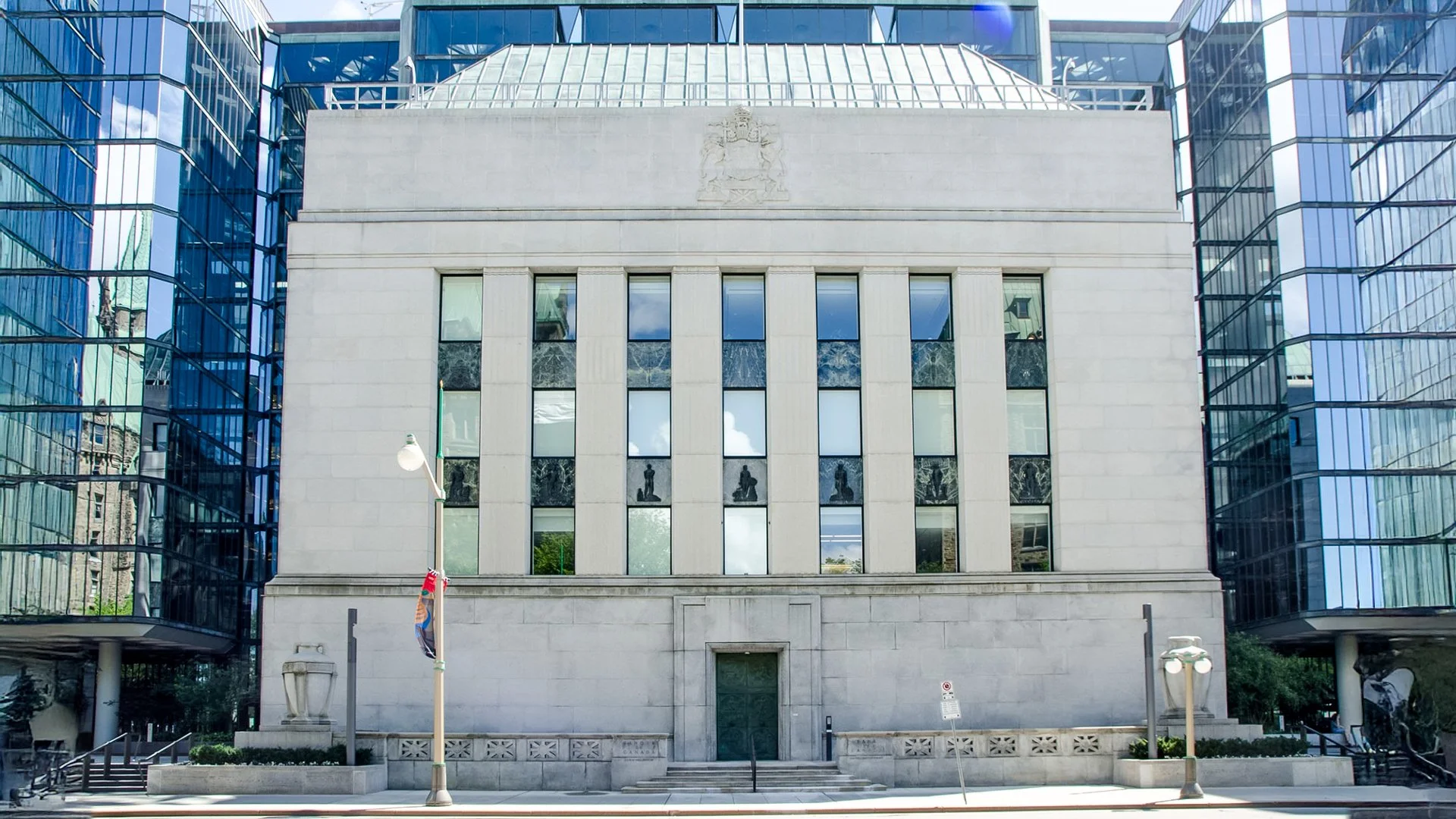Bank of Canada Cuts Rates to 2.25% as Tariffs Bite and Inflation Persists: What It Means for Forex Traders
The Big Picture
The Bank of Canada (BOC) has officially lowered its policy rate to 2.25%, marking a 25 basis point cut as the economy faces pressure from steep US tariffs and slowing growth. While the move is designed to support the economy amid trade disruptions, it also signals that policymakers are balancing between stimulating growth and keeping inflation stable near their 2% target.
For Forex traders, this is a major development. A rate cut typically weakens the Canadian Dollar (CAD), especially against currencies like the US Dollar (USD) — making pairs like USD/CAD highly reactive. But the context behind this decision reveals much more about how Canada’s economy is adapting to global trade shifts and inflationary challenges.

A Nation Under Pressure: Tariffs Reshape Canada’s Economy
The Canadian economy continues to adjust to steep US tariffs that have disrupted exports and business confidence. The BOC report notes:
Exports to the United States have fallen sharply, especially in autos, steel, aluminum, and lumber.
Business investment remains weak, as firms hesitate to spend amid uncertainty.
The economy contracted by 1.6% in Q2 2025, with only modest growth expected through year-end.
Despite this, household and government spending are providing a cushion, and residential investment is beginning to recover. The BOC projects that growth will gradually strengthen, with GDP expected to rise 1.2% in 2025, 1.1% in 2026, and 1.6% in 2027.
However, the central bank acknowledges that the structural damage caused by trade disruptions has reduced the economy’s capacity, making it harder to return to pre-conflict growth levels anytime soon.
Inflation: Still Sticky Around 2–3%
Despite sluggish growth, inflation remains stubbornly high:
Headline CPI inflation sits at 2.4%, slightly above projections.
Core inflation (excluding taxes and volatile components) is around 3%.
Broader measures of inflation point to an underlying rate near 2.5%.
The Bank expects inflationary pressures to ease, with CPI inflation staying close to 2% over the forecast horizon. Still, the stickiness of core inflation shows that prices aren’t cooling as fast as policymakers would like.
For Forex traders, this creates a mixed outlook: while a rate cut can weaken the CAD, inflation that remains elevated might limit further easing — creating volatility in pairs like USD/CAD and EUR/CAD.
Why the Bank of Canada Cut Rates
With the economy under strain and inflation appearing contained, the BOC Governing Council decided to lower the overnight rate to 2.25%. The Bank Rate now stands at 2.5%, and the deposit rate at 2.20%.
In the words of the BOC, this decision aims to “help the economy through this period of structural adjustment” while keeping inflation close to target. Policymakers emphasized that:
“If inflation and economic activity evolve broadly in line with projections, the current policy rate is about the right level.”
However, they also stated that the Bank remains ready to respond if conditions change — suggesting a data-dependent stance moving forward.
Global Headwinds Add to Uncertainty
The global economy, while resilient, is slowing. The BOC projects global growth to fall from 3.25% in 2025 to 3% in 2026–2027.
In the United States, economic activity remains strong due to the AI investment boom, though tariffs are pushing consumer prices higher.
The Euro area faces weaker exports and slowing domestic demand.
China is offsetting lost US exports with new trade partners but seeing softer business investment.
As a result, trade routes and supply chains are being reconfigured, adding costs and uncertainty. Meanwhile, the Canadian dollar has depreciated slightly against the US dollar, reflecting both weaker domestic growth and global risk sentiment.
Labour Market Softness Adds to the Challenge
Canada’s labour market remains weak:
The unemployment rate is 7.1%, with sluggish hiring across sectors.
Wage growth has slowed, and job losses continue in trade-sensitive industries.
Population growth is slowing, meaning fewer new jobs are needed to keep employment stable.
This combination of weak job creation and moderate inflation suggests that monetary policy alone cannot fix structural challenges. The Bank’s priority is to preserve confidence in price stability even as it supports growth through lower rates.
What It Means for Forex Traders
For those engaged in Forex Trading or just beginning through Forex Trading for Beginners, this development is crucial.
Rate cuts typically weaken the CAD, making USD/CAD and GBP/CAD attractive for bullish setups.
Volatility tends to spike following policy announcements and press conferences — especially with the BOC Governor’s post-release remarks.
Traders should monitor upcoming data — particularly on inflation and GDP — as any surprise rebound could shift market sentiment quickly.
This mix of monetary easing and structural weakness may keep the Canadian Dollar under pressure in the near term, but patient traders could find opportunities as the BOC’s policies begin to stabilize the economy.
Why It Matters — Even for Filipinos and Global Traders
Even if you’re trading from the Philippines, the Canadian Dollar (CAD) remains one of the major currencies in the Forex market. Its movements affect cross-pairs like USD/CAD and CAD/JPY, influencing trading decisions worldwide.
Through platforms like GME Academy (Global Markets Eruditio), traders can learn how to interpret central bank decisions like this one — understanding how interest rate changes ripple through global markets and currency pairs.
Final Thoughts
The Bank of Canada’s rate cut to 2.25% marks a cautious shift toward easing as it tries to balance growth and inflation amid historic trade challenges. For traders, this is a reminder that every central bank move tells a story — one of risk, opportunity, and resilience in a changing world.
Want to understand central bank decisions and trade them effectively?
Join our FREE Forex Workshop at GME Academy and learn how to read market signals, interpret rate decisions, and trade smarter in today’s global economy.

